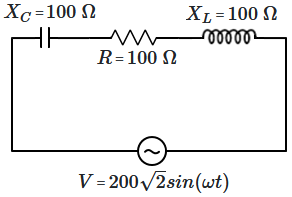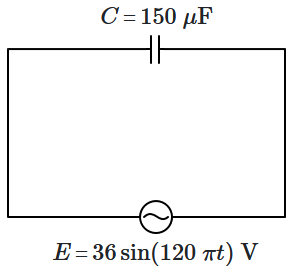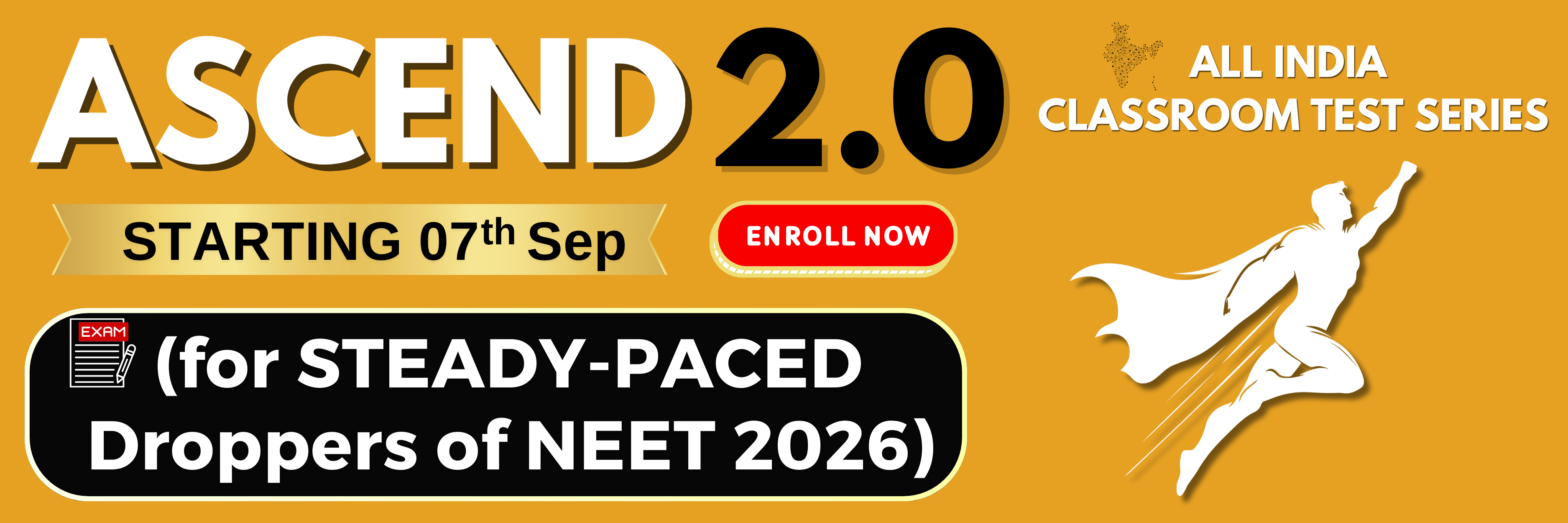Select Chapter Topics:
In the AC circuit shown in the figure, the value of \(I_{rms}\) is equal to:

1. \(2\) A
2. \(2\sqrt{2}\) A
3. \(4\) A
4. \(\sqrt{2}\) A
Subtopic: RMS & Average Values |
69%
JEE
Please attempt this question first.
Hints
If an insulator with inductive reactance \(X_L=R\) is connected in series with resistance \(R\) across an A.C voltage, the power factor comes out to be \(P_1\). Now, if a capacitor with capacitive reactance \(X_C=R\) is also connected in series with the inductor and resistor in the same circuit, the power factor becomes \(P_2\). The ratio \(\frac{P_1}{P_2}\) is:
1. \(\sqrt{2}:1\)
2. \(1:\sqrt{2}\)
3. \(1:1\)
4. \(1:2\)
1. \(\sqrt{2}:1\)
2. \(1:\sqrt{2}\)
3. \(1:1\)
4. \(1:2\)
Subtopic: Different Types of AC Circuits |
JEE
Please attempt this question first.
Hints
For a series \(LCR\) circuit across an AC source, current and voltage are in the same phase. Given the resistance is \(20~\Omega\) and voltage of the source is \(220\) 𝑉. What is the current in the circuit?
1. \(11\) A
2. \(22\) A
3. \(33\) A
4. \(44 \) A
1. \(11\) A
2. \(22\) A
3. \(33\) A
4. \(44 \) A
Subtopic: Different Types of AC Circuits |
92%
From NCERT
JEE
Please attempt this question first.
Hints
Please attempt this question first.
Across an inductor of \(5\) mH, an AC source with potential given as \(268 \sin (200 \pi t) \) volts is used. The value of inductive reactance provided by the inductor is equal to:
1. \(2\pi ~\Omega\)
2. \(\frac{\pi}{2}~\Omega\)
3. \(20\pi~\Omega\)
4. \(\pi~\Omega\)
1. \(2\pi ~\Omega\)
2. \(\frac{\pi}{2}~\Omega\)
3. \(20\pi~\Omega\)
4. \(\pi~\Omega\)
Subtopic: Different Types of AC Circuits |
89%
From NCERT
JEE
Please attempt this question first.
Hints
Please attempt this question first.
In a series \(RLC\) circuit, \(R=80~\Omega\), \(X_L=100~\Omega\), \(X_C=40~\Omega\). If the source voltage is \(2500 \cos (628 t)\) V, the peak current is equal to:
1. \(5\) A
2. \(25 \) A
3. \(10\) A
4. \(12\) A
1. \(5\) A
2. \(25 \) A
3. \(10\) A
4. \(12\) A
Subtopic: RMS & Average Values |
77%
JEE
Please attempt this question first.
Hints
Consider the following two 𝐿𝐶 circuit.

If \(\omega_1\) and \(\omega_2\) are resonance frequencies of the two circuits. Then \(\frac{\omega_1}{\omega_2}\) equal to:
1. \(4\)
2. \(3\)
3. \(2\)
4. \(1\)

If \(\omega_1\) and \(\omega_2\) are resonance frequencies of the two circuits. Then \(\frac{\omega_1}{\omega_2}\) equal to:
1. \(4\)
2. \(3\)
3. \(2\)
4. \(1\)
JEE
Please attempt this question first.
Hints
In a series \(LCR\) circuit, the resistance \(R,\) inductance \(L,\) and capacitance \(C\) are \(10~\Omega,\) \(0.1~\text{H},\) and \(2~\text{mF},\) respectively. If the angular frequency of the AC source is \(100~\text{rad/s},\) the power factor of the circuit is:
| 1. | \(\dfrac{1}{\sqrt{5}}\) | 2. | \(\dfrac{2}{\sqrt{5}}\) |
| 3. | \(\dfrac{3}{\sqrt{5}}\) | 4. | \(\dfrac{2}{2\sqrt{5}}\) |
Subtopic: Power factor |
76%
From NCERT
JEE
Please attempt this question first.
Hints
Please attempt this question first.
Given below are two statements:
| Statement I: | In a purely inductive circuit, the average power consumed is very high. |
| Statement II: | In a purely inductive circuit only, resonance can be achieved. |
| 1. | Both Statement I and Statement II are correct. |
| 2. | Statement I is incorrect and Statement II is correct. |
| 3. | Statement I is correct and Statement II is incorrect. |
| 4. | Both Statement I and Statement II are incorrect. |
Subtopic: Different Types of AC Circuits |
68%
From NCERT
JEE
Please attempt this question first.
Hints
Please attempt this question first.
In an LC oscillating circuit with \(L= 75~~ mH\) and \(C = 30 \mu F\). The maximum charge of capacitor is \(2.7 \times 10^{-4} C\). Maximum current through the circuit will be:
1. \(0.18~~ \text {Amp}\)
2. \(0.24~~ \text {Amp}\)
3. \(0.72~~ \text {Amp}\)
4. \(0.92~~ \text {Amp}\)
1. \(0.18~~ \text {Amp}\)
2. \(0.24~~ \text {Amp}\)
3. \(0.72~~ \text {Amp}\)
4. \(0.92~~ \text {Amp}\)
From NCERT
JEE
Please attempt this question first.
Hints
Please attempt this question first.
Evaluate the maximum current flowing through the capacitor in the given AC circuit.

1. \(0.65\pi~\text A\)
2. \(0.35\pi~\text A\)
3. \(0.2\pi~\text A\)
4. \(0.8\pi~\text A\)

1. \(0.65\pi~\text A\)
2. \(0.35\pi~\text A\)
3. \(0.2\pi~\text A\)
4. \(0.8\pi~\text A\)
Subtopic: Different Types of AC Circuits |
79%
From NCERT
JEE
Please attempt this question first.
Hints
Please attempt this question first.






